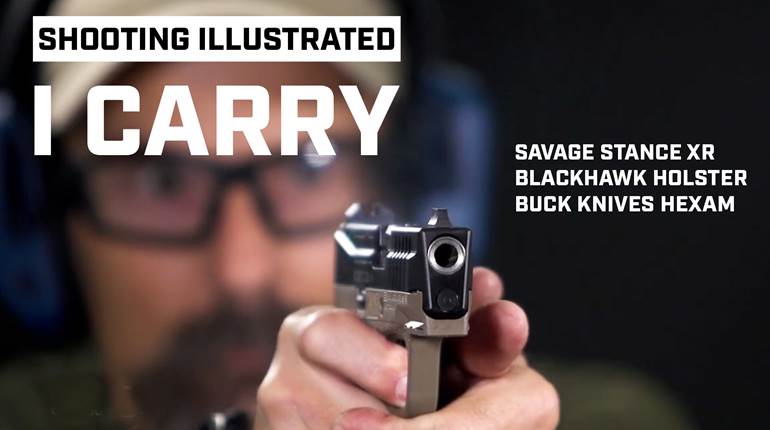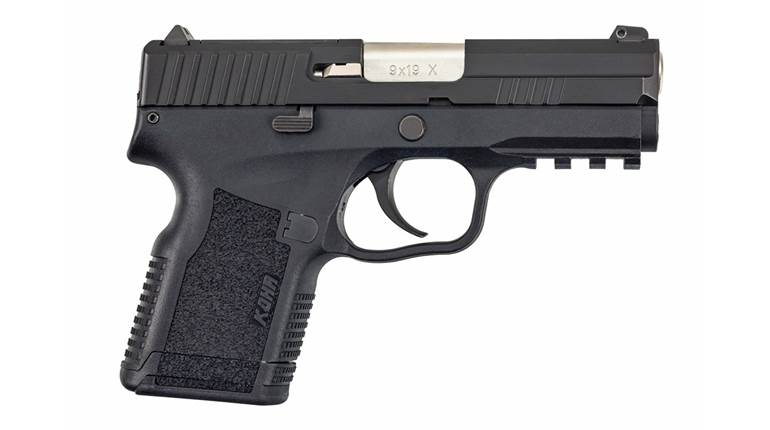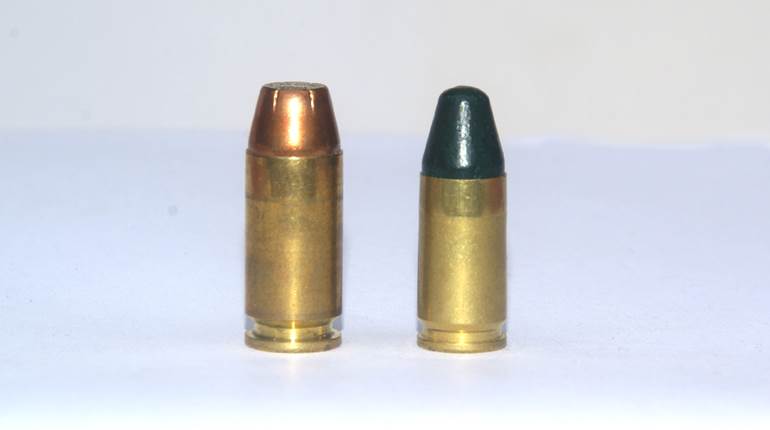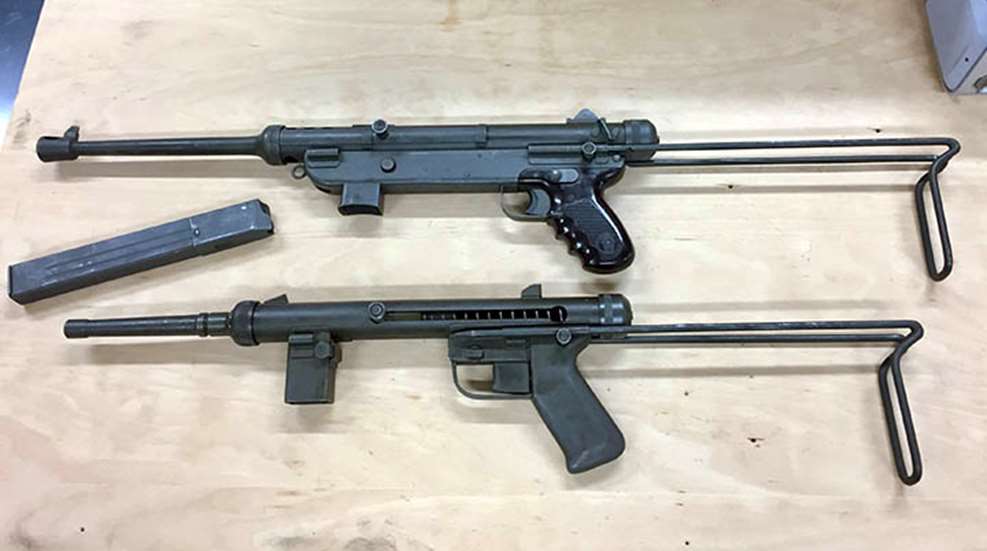
Luxembourg is not a country that is known for gun-making, nor is it typically associated with the political intrigues of decolonizing the African continent. Nevertheless, in 1957, gun-making drew Luxembourg into the middle of a diplomatic confrontation with both France and Belgium regarding the war in Algeria. It all started in January 1952 when 49-year-old businessman Nicolas Scholer established a company named Société Luxembourgeoise d'Armes (abbreviated as “SOLA”) with administrative offices in the city of Vianden, and a factory in the city of Ettelbruck.
The Scholer family had been involved in retail and dry-cleaning business ventures since before World War I, and the creation of SOLA was an attempt to diversify the family’s interests at a time when there was money to be made in the arms market. The guns that had fought World War II were, by then, nearing the end of their service lives and more contemporary designs were in growing demand, so gunmakers across Europe rushed to meet the need.
With a large military or police contract, an arms maker could enjoy years of lucrative production and profit, and Scholer wanted to get in on that action. So in April 1952, he obtained a five-year license for small-arms production from the government. The following month, he hired an engineer to serve as his technical director, a tool maker to run the factory floor in Ettelbruck, and then he obtained 200 examples of the British STEN 9 mm submachine gun from Luxembourg’s Army.
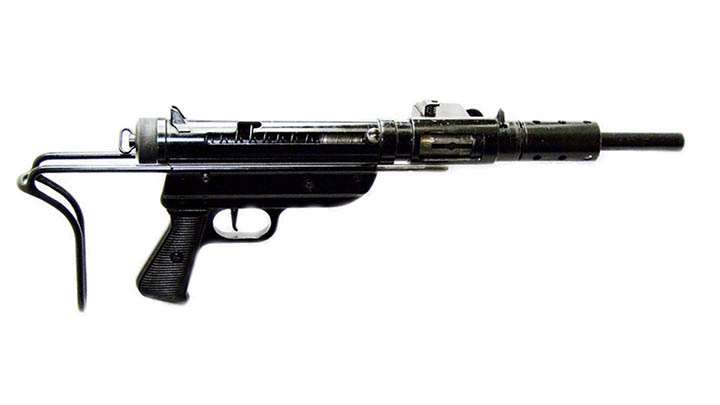
The initial plan was that SOLA would modify those 200 STEN guns based on the Belgian M.I.53 from Imperia Arms, a design that simply added a retractable wire stock and an improved fire control group housing with a modernized pistol grip to the STEN’s receiver tube. Internally though, the Imperia was nothing more than a clunky 1942 submachine gun that was not quite contemporary enough for 1952, so the design was not adopted in Belgium and SOLA’s copy of it was not adopted in Luxembourg.
With the disappointing end of that project, Scholer’s team went to work designing a new gun from the ground up. Because of the introduction of improved safety features, new materials and simplified construction methods, the submachine gun had undergone some changes by 1953. Examples like the Swedish Carl Gustaf m/45, the Danish Madsen M-50 and the British Sterling incorporated these new design features, so they were modern, but they used the open-bolt, blowback operating system because it was still considered state-of-the-art.
When the Belgians moved on from the Imperia M.I.53, they ended up adopting a 6.6-lb. select-fire, blowback 9 mm submachine gun designed by George Vigneron. It had a non-reciprocating bolt handle on the left side, a grip safety, a three-position selector switch, a two-position retractable wire stock, a plastic pistol grip frame, an ejection port cover and a barrel with heat dissipating cooling fins and a built-in muzzle compensator.
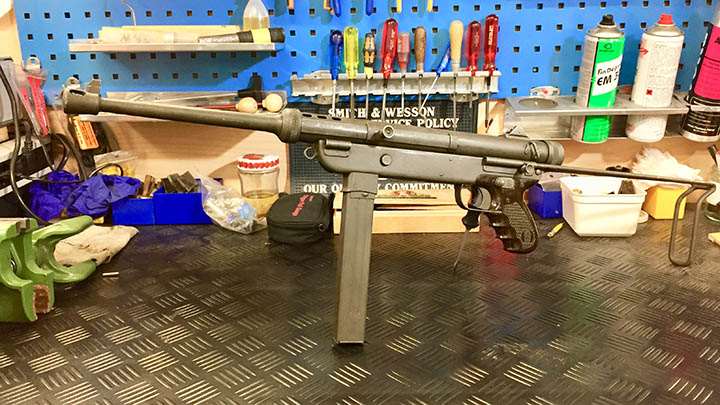
The following year, Scholer’s team had a prototype that was, despite being slightly heavier, largely similar in that it, too, was a select-fire, blowback 9 mm submachine gun that incorporated a two-position retractable wire stock, plastic pistol grip, ejection port cover and a 12” barrel with built-in compensator. It was equipped with a fixed blade front sight at the muzzle and an adjustable U-notch rear sight with settings for 50 and 150 meters. The receiver was a 35 mm diameter cylindrical steel tube equipped with a non-reciprocating bolt handle mounted on the left side.
Unlike the Belgian Vigneron though, the SOLA gun was designed to feed from MP40 double-stack, single-feed magazines because they were abundant in post-World War II Europe. The new gun went into production at the factory in Ettelbruck in 1954 under the product name SOLA Super, but in the end, it turned out to be another disappointment. Luxembourg’s Army put it through trials at Fort Walferdange north of Luxembourg City and at the Reckenthal proving grounds north of Strassen, but then rejected it —ironically in favor of the Belgian Vigneron.
Despite the setback, Scholer’s team soon went to work designing a lighter and more compact version of the SOLA Super with the hope that it would be adopted. What they came up with was also a select-fire blowback 9 mm equipped with a two-position retractable wire stock and designed to feed from MP40 magazines. It was also built on a 35 mm steel receiver tube like the Super, but all of the gun’s other features were meaningfully simplified: the ejection port cover, the muzzle compensator, and the plastic pistol grip were all eliminated.
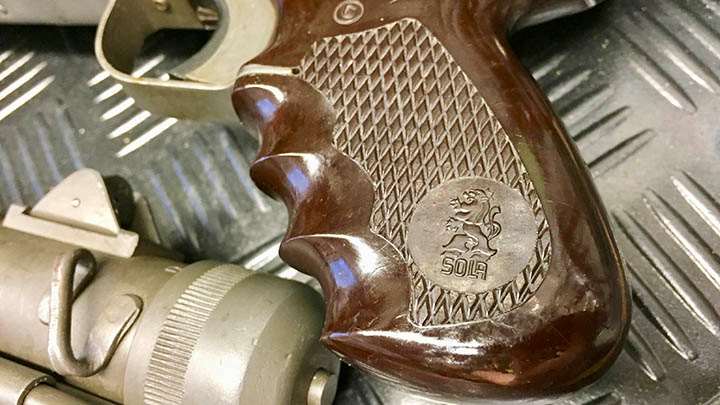
This new design also reduced barrel length to 7.87”, which in turn, reduced overall weight to just 6.4 lbs. It was called the SOLA Légère, or “light,” and by 1956, it was ready for production in Ettelbruck. By then though, the company had a major problem in that it had no customers buying its products. When Luxembourg’s Army chose not to adopt the SOLA Super, Scholer attempted to sell it to several foreign countries, including the United States, but nobody placed orders.
This meant that completed guns were beginning to pile up while no revenue was coming in, and the company was losing money. It did not help the matter that SOLA was attempting to compete with Belgian, German and Swiss companies that were selling second-hand small arms in an already crowded international market. But sometimes those dealers traded newly manufactured guns, so there was still hope that the SOLA Super and the new SOLA Légère would find a buyer.
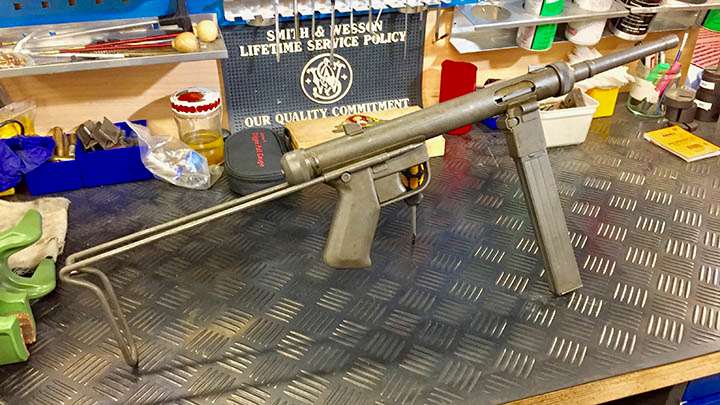
The only problem though was that the SOLA guns were undeniably a product of Luxembourg, and eventually that fact alone would bring about the company’s downfall. At about the same time that the SOLA Super went into production in Ettelbruck in 1954, a nationalist political party in Algeria known as the Front de Libération Nationale – or “FLN” – started a war of independence to overthrow French colonial rule. But the French military was a modern, well-armed fighting force, and the FLN needed guns if it was to succeed.
The conflict, therefore, became an epicenter for arms smuggling. One of the shady characters engaged in that enterprise was a Latvian-German World War II veteran named Georg Puchert. He started off small by smuggling contraband cigarettes but then ultimately established a fake fishing company called Astramar that became the front for running guns to North African rebel groups, including Algeria’s FLN. In Europe, Puchert sought out the hardware that Astramar then smuggled into North Africa, and it was that operation that eventually brought him into contact with SOLA.
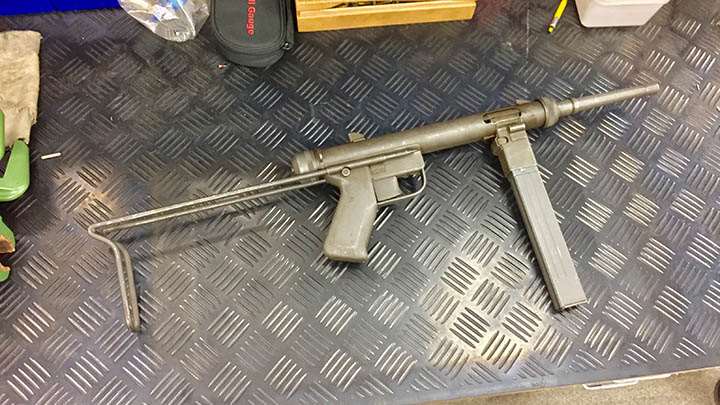
The international arms market back then was not restricted by end-user certificate requirements like it is today, so the business environment was more permissive and therefore more easily navigated. Despite that though, Scholer knew that Luxembourg’s government would never permit the sale of submachine guns to rebels fighting the French, so he came up with an elaborate fencing scheme by which he defrauded the control commission responsible for monitoring what was being made at the factory in Ettelbruck.
In this scheme, the factory “rejected” certain SOLA submachine guns that came off the assembly line and removed them from the government oversight registry with the explanation that they had been destroyed. In reality, SOLA sold the guns to Puchert, who then drove them across the German border to the city of Trier, where they were packed in boxes marked "motor replacement parts." From Trier, the boxes were driven 150 miles to Brussels International Airport and loaded aboard a SABENA Airlines flight to Casablanca.
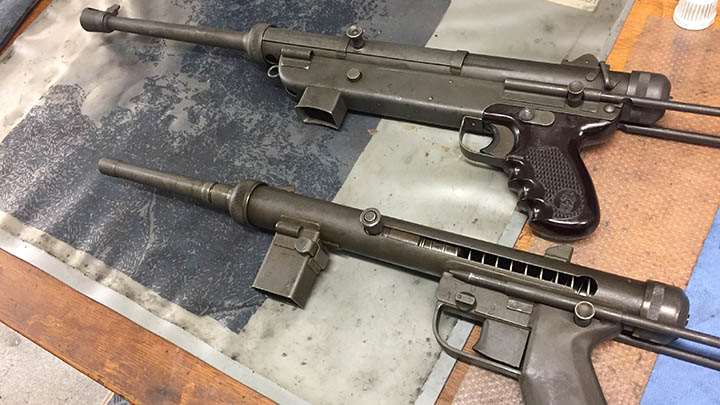
Once the boxes were on the ground in Morocco, all that remained was to drive them across the border into Algeria for delivery to the FLN. Puchert and his crew got away with moving a few deliveries of SOLA submachine guns using this method without being detected, but that luck ran out in late 1956. A ground crewman moving freight around at the air cargo terminal at Brussels airport accidentally dropped one of Puchert’s boxes of "motor replacement parts" and he dropped it from such a height that the box broke open revealing its contents.
Then air cargo personnel informed customs officials who in turn informed the police. The SOLAs were seized, and an investigation was opened that resulted in the Belgian and French governments lodging official protests with Luxembourg’s government. In late January 1957, Nicolas Scholer was convicted of violating arms regulations and fined 2,000 Luxembourg francs.
By coincidence, SOLA’s five-year arms production license was about to expire at the time and, as a consequence of the international diplomatic scandal the company had caused, that license was not renewed. In addition to that, the government seized 760 SOLA Supers, 1,500 SOLA Légère submachine guns and parts that could be used to complete another 2,350 guns. Luxembourg’s Grand Ducal Police kept 50 examples of both models for study purposes, and then destroyed everything else.
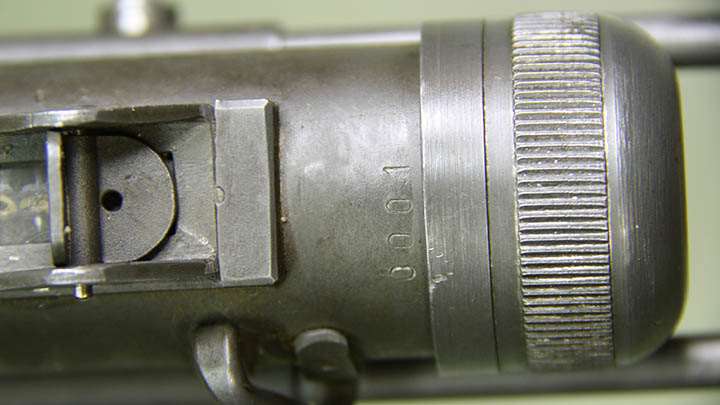
As a gunmaker, SOLA was done at that point, but the factory continued to operate. First it converted to producing machines for making plastic and rubber components, but then in 1959, it began building compressors for refrigeration equipment. The company closed for good in 1960. Nicolas Scholer got into more legal trouble later in 1957 when he was convicted for illegal possession of 2,047 submachine guns and 361 receivers, as well as failure to register the names and addresses of purchasers.
Then in October 1958, he was convicted of selling a firearm to an unspecified South American country without a government permit. The court authorized the seizure of all firearms in his possession and required him to pay a fine of 5,000 Luxembourg francs. As serious as that may seem though, the consequences that Georg Puchert faced were even more severe. On the morning of March 3, 1959, he was killed in Frankfurt by a car bomb that was most likely planted by French agents.
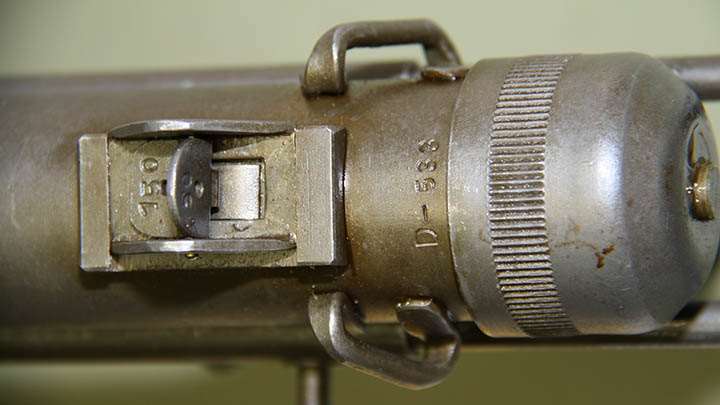
Despite the actions of the French and Luxembourgish governments though, SOLAs had nevertheless reached North Africa before the smuggling operation was shut down, and some of them made it into the hands of the FLN. In fact, a photograph taken during independence ceremonies in Algiers in 1962 shows a member of the FLN’s youth organization armed with a SOLA Légère. This proves that some guns were successfully smuggled into the country during the war.
An unknown number of SOLAs remained in North Africa for another 25 years, and then in the late 1980s, Long Mountain Outfitters in Nevada imported 135 parts kits from Morocco. Licensed manufacturers assembled some of those kits and registered them as Post-1986 dealer samples, so there are functioning examples of both the SOLA Super and the SOLA Légère in collections today in the United States.
The 50 SOLAs that were saved from destruction back in 1957 are still in Luxembourg today. The National Museum of Military History (Musée Nationale d’Histoire Militaire) in the city of Diekirch has 21 examples of the Super in its collection, including serial number 0001, and the George Patton Museum in Ettelbruck has one example in recognition of the fact that the SOLA factory was once located there. The rest of the guns, including examples of both the Super and the Légère, are maintained in the reference collection of the Luxembourg Grand Ducal Police’s Logistical and Technical Support Service headquarters in Luxembourg City.
While sightings are rare today, these obscure little submachine guns combined all the best design features of the STEN, the Grease Gun and the MP40 and narrate an obscure but interesting chapter in the history of small arms. The SOLA submachine guns take us back to a time when an upstart European gun-making firm found itself embroiled in the international intrigues of Cold War decolonization and international arms trafficking. While they were both clever designs, they were introduced at a time when the FAL and the Uzi were changing the landscape of western military small arms. Because of that bad timing, both the SOLA Super and the SOLA Légère became little more than a footnote to a bigger story.












